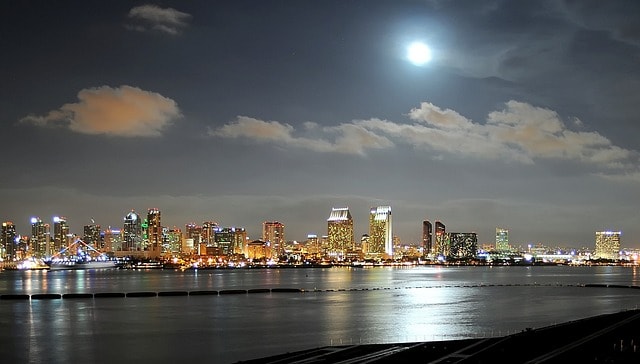
Desalination plants are becoming increasingly important in California due to the ongoing water scarcity issues faced by the state. California is known for its dry climate and limited water resources, which makes the development of alternative water sources crucial. Desalination plants use various technologies to remove salt and other minerals from seawater to make it safe for consumption and other uses. In this article, we will discuss the five largest desalination plants in California, their location, capacity, and the technology they use.
California’s four major desalination plants are the Carlsbad Desalination Plant, Santa Barbara Desalination Plant, Monterey Peninsula Desalination Plant, and the proposed Doheny Ocean Desalination Plant. The Carlsbad plant, the largest and most important, produces 189,270 m3 of fresh drinking water per day.
Although California has a considerable desalination capacity, when you take into account the size of California, its population and wealth it really is not as widespread as you would think. I wrote an article explaining the various reasons why which I encourage you to read: Why Doesn’t California Build More Desalination Plants
1. Carlsbad Desalination Plant: 189,270 m3
The Carlsbad Desalination Plant is the largest and most important desalination facility in California. Located in Carlsbad, San Diego County, the plant produces fresh drinking water from seawater using advanced reverse-osmosis desalination technology. The plant has a capacity of 50 million gallons per day (about 189,270 cubic meters per day) and provides water to the San Diego County Water Authority, which serves more than 3.3 million people in the San Diego area.

The Carlsbad Desalination Plant has been the subject of some controversy since its construction. Some critics have argued that desalination is an expensive and energy-intensive way to produce drinking water and that the plant’s high energy consumption could contribute to climate change. Others have raised concerns about the plant’s impact on marine life, particularly on small organisms that are caught in the intake pipes. Despite these concerns, the Carlsbad Desalination Plant has been praised for its ability to provide a reliable source of drinking water in a region that is prone to droughts and water shortages. The plant has been operational since December 2015 and has been a critical source of water for San Diego County during times of drought.
One interesting fact about the Carlsbad Desalination Plant is that it was developed through a public-private partnership between the San Diego County Water Authority and Poseidon Water, a private water company. Under the terms of the agreement, Poseidon Water was responsible for financing, constructing, and operating the plant, while the San Diego County Water Authority agreed to purchase the water produced by the plant. This model has been seen as a successful example of how public and private entities can work together to address water supply challenges.
2. Santa Barbara Desalination Plant: 28,000 m3
The Santa Barbara desalination plant is a seawater desalination plant located in Santa Barbara, California. It was originally constructed in 1991 but was subsequently shut down in 1992 due to heavy rain and flooding. The plant was recommissioned in 2017 in response to a severe drought in the region. The Santa Barbara desalination plant uses reverse osmosis technology to remove salt and other impurities from seawater, producing fresh drinking water. The plant is capable of producing up to 28,000 cubic meters per day. This water is then distributed to customers through the local water supply network.

The Santa Barbara desalination plant is located on the oceanfront in the city of Santa Barbara, adjacent to the local wastewater treatment plant. The site was chosen due to its proximity to the ocean, which allows for easy access to seawater, and its location in a low-lying area, which minimizes the energy required to pump water to the plant. The Santa Barbara desalination plant has been subject to some controversy in the past. One of the main concerns has been the environmental impact of the plant. The intake pipes for the plant draw in seawater and marine organisms, which can be harmful to marine life. The plant has implemented several measures to minimize its impact on the environment, including a fish screen to prevent fish from being trapped in the intake pipes.
Despite these controversies, the Santa Barbara desalination plant has been an important source of drinking water for the region. It has helped to ensure that local residents have access to a reliable source of water, particularly during times of drought.
3. Monterey Peninsula Water Supply Project: 24,227 m3
The Monterey Peninsula Desalination Plant is a seawater desalination facility located in the city of Marina, California. The plant began operations in December 2020 and provides a much-needed source of drinking water to the residents of the Monterey Peninsula, which has long struggled with water shortages and supply issues. The site was chosen for its proximity to the ocean and its access to a reliable source of seawater. The plant is also located near several major highways, which allows for easy transportation of materials and supplies.
The Monterey Peninsula Desalination Plant uses reverse osmosis technology to treat seawater and produce potable water. The plant has a capacity of 24,000 cubic meters per day. The plant has been designed to be expandable up to 36,000 cubic meters per day, which would make it the 2nd largest desalination plant in California.
The plant was constructed at a cost of approximately $126 million, which has led some to question the economic feasibility of desalination as a solution to the region’s water supply issues. However, proponents of the plant argue that it is a necessary investment in the region’s long-term water security.
4. Dana Point Desalination Plant: 18,925 m3
The Doheny Ocean Desalination Plant is a proposed seawater desalination facility located at Doheny State Beach in Dana Point, California. The plant is still in the planning stages and is not yet operational, but it has the potential to significantly increase the region’s water supply.
The Doheny Ocean Desalination Plant will use reverse osmosis technology to treat seawater and produce potable water. The plant is expected to have a capacity of approximately 18,925 cubic meters per day. The plant will be designed to be expandable up to 56,000 cubic metres per day.
The estimated cost of the project is approximately $200 million, which has led some to question the economic feasibility of desalination as a solution to the region’s water supply issues. However, proponents of the plant argue that it is a necessary investment in the region’s long-term water security.
https://www.waterboards.ca.gov/water_issues/programs/ocean/desalination/index.html
https://www.energy.ca.gov/projects/2013-06-20_5005
https://www.santabarbaraca.gov/gov/depts/pw/resources/faq/desalination.asp
https://www.scwd.org/dana-point-desalination-pilot-plant
https://www.californiaamwater.com/ca-metro/reliability-projects/monterey-peninsula-water-supply-project


